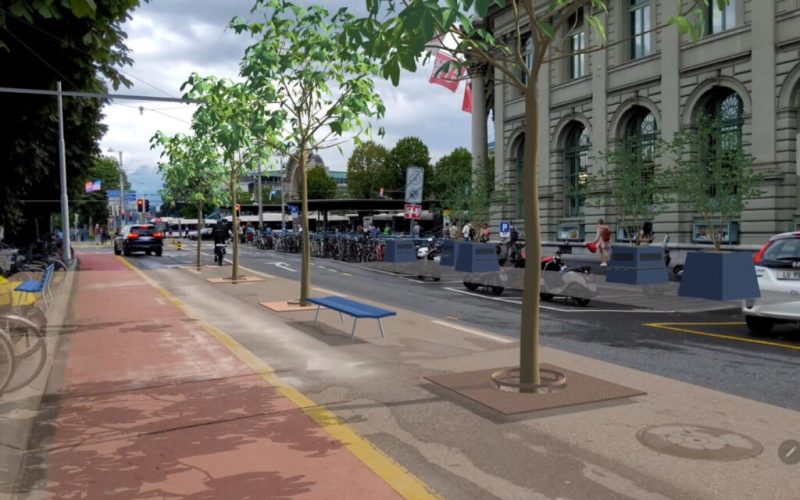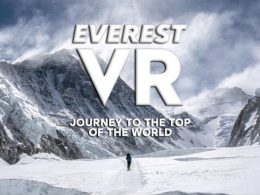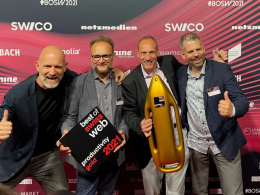Lucerne University of Applied Sciences and Arts is working with the city of Lucerne to test the potential of augmented reality (AR) in urban planning. The focus is on the redesign of Lucerne's Bahnhofstrasse and the theatre square.
How can AR be used for urban planning? The example of the redesign of Bahnhofstrasse and the theatre square in Lucerne shows how: The real environment appears on the tablet display of the augmented reality application with virtual objects projected over it. The projected second row of trees, the new cycle station and the mobile seating with plants can be experienced visually as if they had already been built rather than planned.
The visualisation takes place on tablets
"Users can experience first-hand how Bahnhofstrasse could be designed and used in the future without the need for any real construction or other interventions," says project manager Tobias Matter from Lucerne University of Applied Sciences and Arts. The visualisation takes place on tablets, as these devices are widely used and allow larger groups of participants to use them simultaneously for information and participation processes.
Revolutionising urban planning with augmented reality
Public construction projects involve a broad spectrum of stakeholders from different areas (government, business, civil society). In order to arrive at broad-based solutions, all stakeholders must be given the opportunity to actively participate in such planning and thus organise the process as democratically as possible.
This is currently done primarily with plans, models and texts that are often difficult for laypeople to understand and comprehend. According to Tobias Matter, these hurdles make it difficult to communicate and convey information on an equal footing.
The combination of augmented reality with mobile output devices such as tablets opens up promising new design and application possibilities in urban planning and development: on the one hand, AR visualisations have the potential to vividly close the abstraction gap between planning (plans, visualisations, diagrams) and implementation (space, material, function). On the other hand, the vivid presentation of complex planning and participation processes can encourage active involvement, especially among younger people.
Tobias Matter: "The immersive visualisation technology of augmented reality can therefore be an effective tool for informing the public more transparently about construction and renovation projects, encouraging their participation in the planning process and ultimately creating greater acceptance for such projects among all those involved."
Two research groups from Lucerne University of Applied Sciences and Arts involved
The visualisation of the redesign of Bahnhofstrasse in augmented reality is a joint project of the Civil Engineering Department of the City of Lucerne and the Visual Narrative (Department of Design & Art) and Immersive Realities Research Lab (Department of Computer Science) research groups at Lucerne University of Applied Sciences and Arts.
The two teams are researching and developing the possibilities of augmented and virtual reality, be it in culture, education or urban development - with projects such as the "Augmented Revolution Experience" and "Holodeck".
Source: radio-luzern









